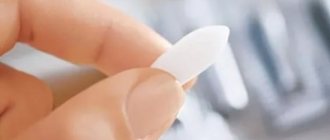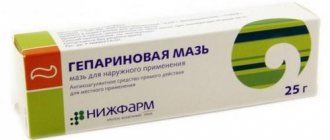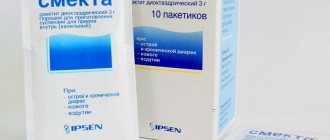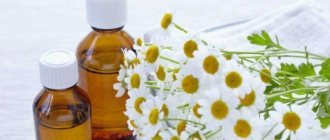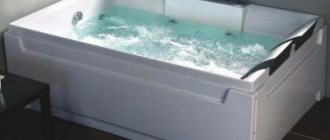- Causes of temperature changes with hemorrhoids
- Is fever dangerous for hemorrhoids?
- How to reduce fever using traditional methods?
- Folk remedies
- Prevention
- Temperature for hemorrhoids (video)
As usual, hemorrhoids should occur without fever; it is not a mandatory symptom, but if it begins to increase, then this is a sure sign of an inflammatory process that has begun in the body. This happens due to instantly multiplying bacteria on hemorrhoidal ulcers.
Causes of temperature changes with hemorrhoids
A rising temperature indicates that hemorrhoids have become acute. The acute form is an exacerbation of the disease, when the very first symptom is thrombosis. The vessels in the rectum begin to increase to incredible sizes, turning into lumps that can either remain inside the anus or come out.
They have an impact on human immunity, which means that if the temperature is 37 degrees, then there is nothing to worry about. This means that the body is trying to fight on its own. But it’s much worse if the temperature rises to 40 degrees.
If a fever occurs, you should consult a doctor to determine the cause of the exacerbation of the disease. These reasons include:
1. Exacerbations of hemorrhoids. A person begins to experience severe pain during bowel movements and constipation. The temperature becomes 37, chills and weakness appear, after which the temperature increases and the symptoms begin to worsen.
2. Sepsis. It is a reaction to an infection that occurs due to the entry into the body of various toxins and microorganisms that are causative agents of infection. Temperatures can rise to 40 degrees. You can observe severe redness around the anus, the skin becomes painful and turns purple. If you do not intervene in time, the process will be impossible to stop, since the bacteria that enter the body have a very detrimental effect on it.
3. Chronic form of the disease. Sometimes abscesses can occur with hemorrhoids, even if the patient carefully follows all the doctors’ recommendations and takes care of his health. And if an abscess does occur, then it can lead to a deviation, due to which a temperature appears, which in the early stages of the onset of the disease might not have existed.
4. Thrombosis. It is a blockage of blood vessels with blood clots, which causes blood to accumulate and hemorrhoids to become larger. Thrombosis in the second stage can cause inflammatory processes, which entails a possible increase in temperature.
5. Paraproctitis. It is one of the most dangerous exacerbations. With paraproctitis, bacteria penetrate into the abdominal cavity through the anal glands or the mucous membrane of the rectum, which leads to the filling of the microflora of the anus with a variety of pathogenic bacteria (streptococci, staphylococci, etc.). In humans, it may be accompanied by fever, fever and chills.
In these cases, folk remedies cannot be treated. If you do not seek treatment in time, intoxication of the entire body may begin.
6. Postoperative period. The operation helps to get rid of the problem of hemorrhoids by removing the inflamed hemorrhoidal cones, which reduces the possibility of fever to almost nothing. However, although rare, complications do occur and they are accompanied by an inflammatory process. If this happens, you need to contact a specialist again to carry out disinfection with special means.
If the recovery period does not go smoothly, then there is a fairly high probability of a repeat operation.
More about complications
In the chronic form of hemorrhoidal disease, the symptoms are usually “smoothed”, and the body temperature rarely exceeds 37 °C. High levels of mercury can aggravate the disease or cause complications.
Acute hemorrhoids
The acute form of anal varicose veins is accompanied by an exacerbation of all symptoms. The pain intensifies, hemorrhoids cause a burning sensation in the anal canal, and often after bowel movements the patient observes blood on toilet paper or stool.
A temperature of 37 or even 38 degrees may indicate that a bacterial infection has penetrated the hemorrhoids affected by varicose veins, resulting in an inflammatory process. If left untreated, it can spread to nearby tissues.
Node thrombosis
In the vast majority of cases, thrombosis, characterized by the formation of a blood clot, occurs as a result of worsened chronic hemorrhoids.
The blood clot compresses the nerve endings in the vessels, causing the patient to experience excruciating pain.
Is fever dangerous for hemorrhoids?
In the chronic form, the temperature rarely rises above 37 degrees. And if the indicators begin to increase significantly, then this indicates that the disease is worsening and complications begin to appear.
Complications include :
- Necrosis. If cavernous formations fall out or are thrombosed, then there is a possibility of necrosis (tissue death), which can affect not only the node, but also nearby areas. The tissues begin to turn black, bleeding begins, pain and the smell of rot appear.
- Pararectal abscess. An inflammatory process that spreads to the subcutaneous fatty tissue of the anorectal area. It is accompanied by pain, high fever, and difficulties with excreting feces and urine. Swelling is observed. In case of perirectal abscess, surgical intervention is mandatory.
Symptoms appear very quickly. The functioning of internal organs is impaired, which means that in the absence of proper treatment, a person may die within a couple of days.
Main symptoms of hemorrhoids
Hemorrhoids mean enlargement and protrusion of venous collections located in the anorectal region. Depending on the location of the formations, experts distinguish external, internal and combined varicose veins of hemorrhoidal veins.
Hemorrhoids mean enlargement and protrusion of venous collections located in the anorectal region.
The main signs of a common proctological disease include such manifestations as:
- pain during bowel movements;
- bleeding of varying degrees of intensity;
- itching and burning sensation in the anus;
- feeling of a foreign object in the rectal canal;
- exit of enlarged cavernous formations from the rectum.
The presence of such symptoms depends on the form of the disease. So, with external localization of hemorrhoids, bleeding is rare, but the nodules hurt, as they say, “as much as possible.”
In addition, the severity of the clinical picture will depend on the degree of the pathological process. For example, cavernous formations begin to fall out from the second stage of the disease.
The most intense symptoms accompany the most severe degree of the disease – the fourth.
How to reduce fever using traditional methods?
What to do if the patient begins to worry about the temperature due to acute hemorrhoids? The most correct decision in such situations is to consult a doctor, who will decide on the necessary treatment.
It is allowed to take non-steroidal anti-inflammatory drugs, but in strictly limited quantities so as not to thin the blood too much. But using traditional methods of treatment, such as baths and microenemas, should be extremely careful, because in the absence of competent therapy, the patient’s condition can only get worse.
You should not bring down the temperature with medications if its value has reached 39 degrees. If the readings are this high, you should consult a doctor immediately.
To combat rising temperatures, the following measures must be taken:
- be treated with antibiotics;
- go through local sanitation - this will help clean the anus and speed up the healing process;
- if there is a need for surgical intervention, then necrectomy is performed to cut off the inflamed areas;
- take anti-inflammatory drugs;
- sometimes the cause of the temperature may be hidradenitis suppurativa (an inflammatory process that occurs due to staphylococcal infections entering the apocrine sweat glands), and in such cases treatment is prescribed and carried out by a dermatologist.
It is important not to forget that all medications should be taken strictly according to the instructions, not exceeding the dosage, and, of course, only as prescribed by a specialist.
Minimally invasive treatment methods are less dangerous than full-fledged surgery, so they rarely cause fever. To monitor the patient’s condition and avoid complications, body temperature is measured with a rectal thermometer after sleep.
Typically, patients are prescribed treatment according to the following scenario:
- Apply Levomekol ointment (an anti-inflammatory agent) to the wound.
- Vurdon suppositories can be used as a pain reliever.
- Take Senade (herbal laxative) for 10-15 days.
- Take sitz baths with potassium permanganate.
- At a temperature of 37 to 38 degrees, you can take a regular antipyretic. These medications include: Aspirin, Analgin and Paracetamol.
Also, for the treatment of chronic and acute hemorrhoids, which cause the temperature to rise, you can use heparin ointment. It contains three components - heparin (prevents the formation of blood clots), benzocaine (eliminates pain) and benzyl nicotinate (accelerates the action of the ointment).
Hyperthermia after surgery
In the final stages, minimally invasive techniques or classic hemorrhoidectomy become the only treatment option for anal varicose veins. Such interventions in some cases allow the patient to forget about the disease for a long time (or forever).
In the final stages, minimally invasive techniques or classic hemorrhoidectomy become the only treatment option for anal varicose veins.
The recovery period after surgery is the most important stage in recovery from hemorrhoids. If the intervention is carried out correctly and the patient follows medical recommendations, rehabilitation proceeds as planned and without complications.
Systemic or local anti-inflammatory medications will help alleviate the condition. It is extremely rare that doctors resort to repeated surgery to remove pustular accumulations and clean surgical sutures.
To prevent such radical methods (re-intervention), the basal temperature in the anal canal is measured in men and women to determine the presence of an inflammatory process. The procedure is carried out after waking up.
With hemorrhoids and after surgery, the temperature of the internal organs normally does not exceed 37 degrees, but even with high levels it is impossible to clearly conclude that there are complications.
Such data can be provided not only by hemorrhoidal disease, inflammation in the anus, but also by a common cold, stress, and changes in climatic conditions. In this case, the doctor may prescribe other diagnostic procedures.
Stress can lead to complications.
Folk remedies
Before treatment with such methods, it is better to consult a doctor to avoid causing further harm to yourself. Let's look at the most popular means:
1. Oils:
- A very effective remedy for treating hemorrhoids is rock oil (brakshun) - these are mineral growths that are found in the crevices of rocks. It is valued, first of all, for its hemostatic and anti-inflammatory properties. After a course of three months in the form of microenemas and a drinking solution, the nodes begin to dissolve, and the process of defecation returns to normal. Brakshun gives an effect even when other means such as ointments and suppositories no longer help.
- Sea buckthorn oil is a remedy that can be used even by pregnant women. It helps regenerate tissue, has anti-inflammatory properties, eliminates discomfort and pain thanks to the organic acids, vitamins and tannins it contains. It can be taken orally immediately after waking up on an empty stomach. Compresses and lotions help restore damaged blood vessels - they are applied to the anus and changed three times a day.
2. Candles:
- From raw carrots - inserted into the anus before bed for 30-40 minutes.
- Ice candles - you can use plain water, or you can use chamomile infusion. Such a candle is kept in the anus until it completely melts.
- At night, you can insert suppositories made from raw potatoes into the anus, and lubricate the surrounding skin with apricot oil.
3. Baths:
- Cold sitz bath. Take 1 liter of cold water and sit for 5 minutes. Take twice a day - morning and evening. You can add potassium permanganate to the water, bringing the water to a soft pink color.
- Steam sitz bath with chamomile infusion. Pour boiling water over 1 teaspoon of flowers. Covered to the waist, the patient should sit over this hot infusion for about 15 minutes.
4. Ointments:
- Marigold (calendula) ointment – mix 10 g of Vaseline and 5 g of calendula tincture.
- Mumiyo can also be used as an ointment. 0.3–0.5 g of mumiyo is rubbed between the fingers and lubricated on the external hemorrhoids. If it is necessary to treat internal hemorrhoids, then mumiyo is inserted into the anus.
There are other ways to reduce the temperature that appears:
- cold foot baths;
- apply cold compresses;
- carry out wiping with plain water at room temperature;
- drink 50 ml of warm water every hour;
- Remove as much clothing as possible from the patient.
Possible consequences and complications
If you give preference to self-medication, then there is a high probability of developing dangerous complications . Normal inflammation can result in bleeding and the growth of hemorrhoids.
The worst complication is the occurrence of paraproctitis due to a purulent infection. There is a danger of pus spreading to the pelvic organs.
Paraproctitis is very dangerous for older people with heart disease. For this category of people, operations are strictly prohibited. Only antibiotics will help.
Sometimes the cause of paraproctitis is tuberculosis. In this case, the consequences are unpredictable and death is possible.
The most dangerous complication remains embolism , in which a piece of a blood clot breaks off and clogs a pulmonary vessel. The outcome is sad: from severe pneumonia to death.
Now that you know the seriousness and danger of a high temperature situation with hemorrhoids, what to do is the next important topic that we would like to address in this article.
- Detailed description of the various stages: first, second, third, fourth;
- Features of the internal course of the disease and external manifestations;
- A list of medications, suppositories and ointments that are used in the treatment of this disease can be found here.
There are also materials that may be of interest to you:
And you can find out about harmful and beneficial products for the male organ here.
Temperature for hemorrhoids (video)
You can learn about the reasons for the increase in temperature, as well as how you can reduce the high temperature of hemorrhoids from this video:
Hemorrhoids and fever occur together quite rarely. But if a symptom appears, it means that inflammatory processes have begun in the body, which can lead to serious consequences. Therefore, at the first signs of fever, the patient should immediately contact a proctologist to carry out all necessary measures for treatment.
First aid
With hemorrhoidal disease, even a slight increase in temperature and chills indicate changes in the course of the disease and should be a reason to consult a proctologist.
If you have unpleasant symptoms in the anal canal, it is better to consult a proctologist
Hyperthermia is a mandatory symptom of the inflammatory process. To avoid serious irreversible complications and the disease becoming chronic, complex therapy is needed, which can only be prescribed by a doctor.
What to do if you have a fever with hemorrhoids? To alleviate the patient's condition, fever relievers are prescribed. For example, aspirin, paracetamol, ibuprofen, etc. Medicines that relieve pain may also be recommended.
Complete treatment includes:
- A course of laxatives to eliminate constipation.
- Taking antibiotics to fight infection.
- Cleansing of purulent discharge from the anorectal area with anti-inflammatory and antibacterial agents.
- The use of antihemorrhoidal ointments, suppositories, creams. Used to stop bleeding, eliminate swelling and inflammation, reduce itching and pain, and restore damaged tissue.
- Taking hygiene measures.
- Elimination of harmful foods from the diet.
Features of treatment of hemorrhoids during pregnancy and breastfeeding
The disease is widespread in women during pregnancy and after childbirth. This is due to a violation of the outflow of blood from the pelvic organs. The fetus, uterus and amniotic fluid put pressure on the blood vessels, intestines, and bladder. A woman experiences swelling of the extremities, constipation, and heartburn.
Is there a fever with hemorrhoids during pregnancy? During pregnancy, body temperature may rise slightly, especially in the first trimester, when the body is just getting used to the fact that the fetus will develop and grow inside. Hemorrhoids develop most often in the 2nd and 3rd trimesters, when the child is rapidly growing.
Feeling unwell, weakness, or a slight increase in temperature is a reason to consult a doctor.
Neglected hemorrhoids can cause serious illnesses and interfere with normal childbirth and child care. The situation is complicated by the fact that not all medications can be taken by this category of patients. After all, many of them penetrate through the placenta into the fetal bloodstream and into breast milk. It is advisable to strictly follow the doctor's instructions.
During pregnancy and breastfeeding, you can take Paracetamol and Ibuprofen - those medications that are allowed for infants. The dosage is calculated by the doctor individually.
Prevention
Like most other diseases, hemorrhoids are easier to prevent than to treat. You should not put off visiting a doctor if there are even the slightest signs of illness. Pregnant and postpartum women should pay special attention to their health, because they are at risk for developing hemorrhoids. Men who lead an unhealthy lifestyle should think about timely diagnosis and, if necessary, treatment of the disease.
In order to prevent the development of such an unpleasant disease, you must follow a few simple rules:
- learn to eat a properly balanced diet, avoid constipation and remember to hydrate;
- with a sedentary lifestyle, it is necessary to regularly engage in physical exercise so that the blood in the pelvic region does not stagnate;
- give up bad habits (smoking or alcohol provoke the formation of congestion in the blood vessels of the whole body);
- maintain personal hygiene (you must wash yourself thoroughly after each visit to the toilet or use wet wipes);
- try to lose weight if you are overweight;
- If you exercise excessively, you need to give your body time to recover and try not to overexert yourself.
Hemorrhoids are a dangerous vascular disease. Represents varicose veins of the choroid plexus in the pelvis. Blood stagnation occurs. The patient feels pain and itching in the anus. Bleeding from varicose veins develops. The temperature with hemorrhoids rises to 40 degrees Celsius.
